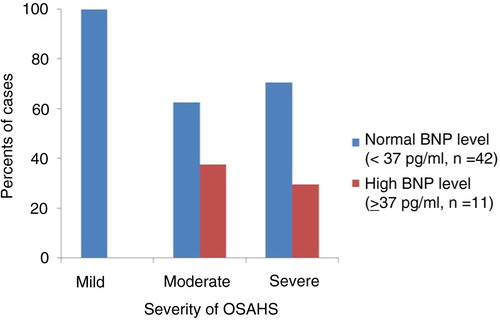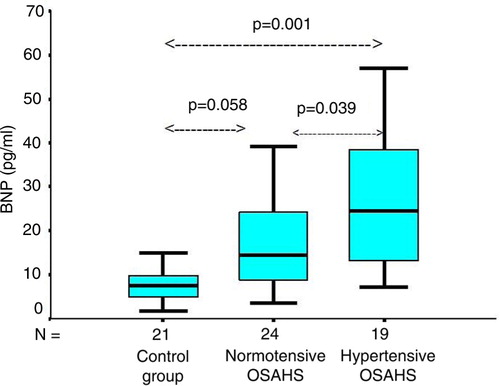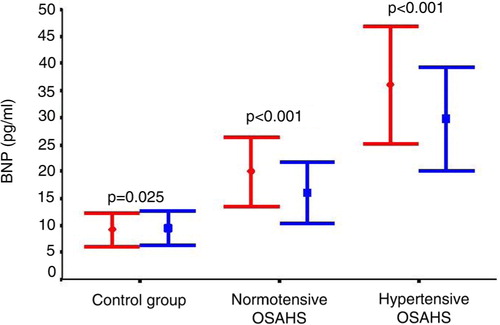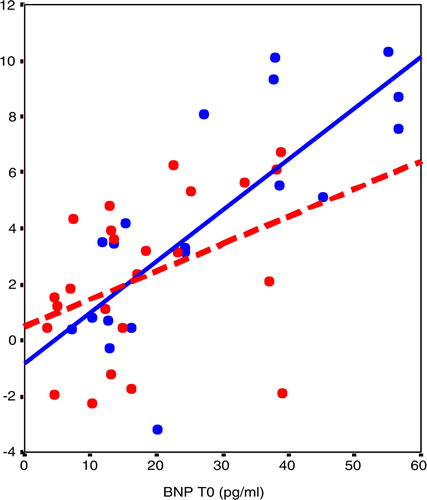Figures & data
Table 1 Clinical characteristics, results of sleep studies, and spirometric measurements: comparison of OSAHS patients, normotensive and hypertensive patients, and controls
Table 2 Baseline clinical and polygraph data according to baseline BNP levels
Fig. 1 Distribution of BNP by OSAHS severity. OSAHS, obstructive sleep apnea-hypopnea syndrome; BNP, brain natriuretic peptide.

Table 3 OSAHS classification according to baseline BNP levels (pg/ml)
Table 4 Baseline patient characteristics according to baseline AHI
Fig. 2 The BNP levels in hypertensive OSAHS were significantly higher than in normotensive OSAHS patients (18.05±11.73 pg/ml) (p=0.039) and controls (9.26±6.75 pg/ml) (p=0.001). Normotensive OSAHS patients had higher baseline BNP levels in comparison with controls, but there was no statistically significant difference between the two groups (p=0.058). Boxes represent values within the interquartile ranges. Whiskers represent the data range, and the lines across the boxes represent the median values. The bottom and top of the boxes are the 25th and 75th percentiles, respectively. OSAHS, obstructive sleep apnea-hypopnea syndrome; BNP, brain natriuretic peptide.

Fig. 3 Effect of CPAP treatment in hypertensive (n=11) and normotensive (n=12) OSAHS patients compared with controls (n=21). OSAHS, obstructive sleep apnea-hypopnea syndrome; BNP, brain natriuretic peptide; CPAP, continuous positive airway pressure. Red: baseline levels; blue: levels after 6 months of CPAP therapy.

Fig. 4 In linear regression, the changes in BNP levels in 23 patients OSAHS after 6-month CPAP treatment were more important in OSAHS patients with higher baseline BNP levels. Note that hypertensive OSAHS patients had the higher delta BNP (T6–T0) (p=0.015, r=0.72) in comparison with normotensive OSAHS patients (p=0.03, r=0.62). OSAHS, obstructive sleep apnea-hypopnea syndrome; BNP, brain natriuretic peptide; CPAP, positive airways pressure. Blue: hypertensive OSAHS; red: normotensive OSAHS.

Fig. 5 In linear regression, the changes in BNP levels in 23 patients OSAHS after 6-month CPAP treatment were more pronounced in OSAHS patients with prolonged nocturnal desaturation (TST90) (r=+0.65, p=0.001). OSAHS, obstructive sleep apnea-hypopnea syndrome. BNP, brain natriuretic peptide; CPAP, continuous positive airway pressure.

